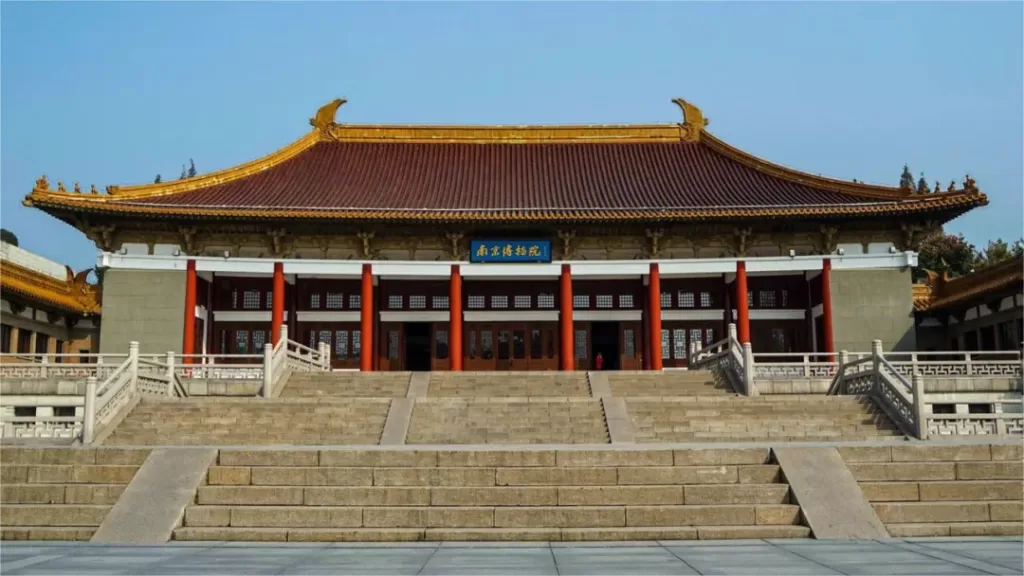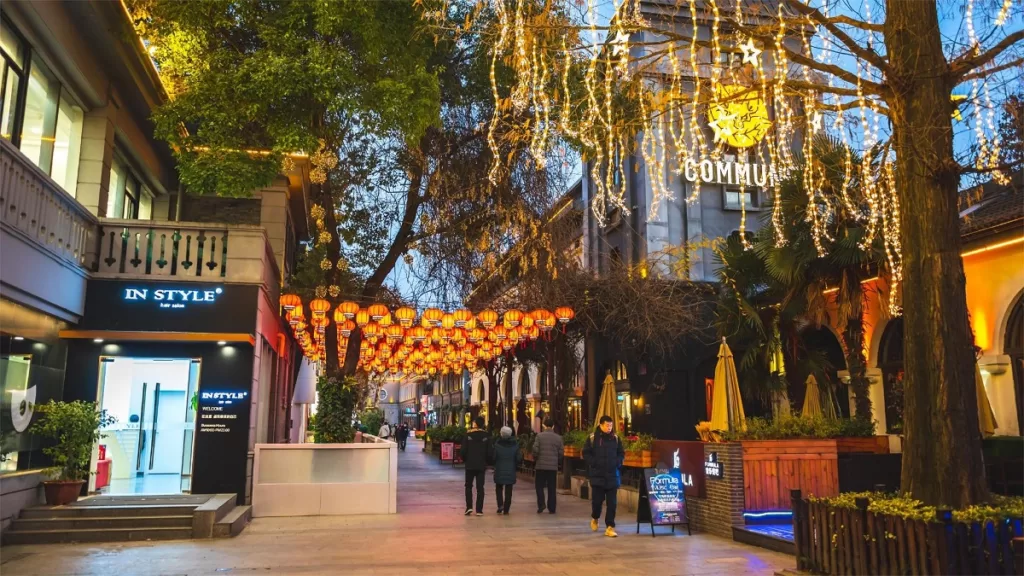The Ming Palace (明故宫) in Nanjing is a historical treasure that comprises both the Imperial City and the Palace City. With its grandeur and significance, it serves as the blueprint for Beijing‘s Forbidden City. This magnificent palace was the imperial residence during the early Ming Dynasty, witnessing the reigns of three successive emperors: Hongwu, Jianwen, and Yongle. However, its prominence declined when Emperor Zhu Di (also known as Yongle Emperor) relocated the capital to Beijing in 1421. Today, only the buried stone foundations remain, a silent testament to its former glory.
For over five decades, the Ming Palace played a central role as the imperial residence during the early Ming Dynasty. Even after Emperor Zhu Di’s decision to move the capital north to Beijing, Nanjing continued to have significance as the seat of Nanjing Directly-Managed City. Members of the imperial family and prominent officials continued to be stationed in Nanjing, underscoring its continued importance. Nonetheless, the palace gradually fell into decline after the capital’s relocation, enduring natural decay over the subsequent centuries.
During the Xianfeng and Tongzhi reigns of the Qing Dynasty, the palace faced substantial damage due to the conflicts between the Taiping Rebellion and the Qing forces. Consequently, the once-majestic structures above ground disappeared entirely. The palace’s historical legacy lives on through its underground stone foundations, which have remained remarkably intact.
Today, on the site of the Ming Palace, you can find the Ming Palace Square and the Wuchao Gate Park, which offer a glimpse into this illustrious past. While the physical structures of the palace may have disappeared, its historical and cultural significance endures, and the remnants of its foundation serve as a poignant reminder of the Ming Dynasty’s remarkable history in Nanjing. Visitors to this historic site can immerse themselves in the rich heritage of the Ming Dynasty and appreciate the enduring legacy of this once-majestic palace.
Table of Contents
- Basic Information
- Location and Transportation
- Highlights of Ming Palaec Ruins Park
- Vlog about Ming Palace Ruins Park
- Useful Tips Summarized from Reviews
- Attractions Near Ming Palace Ruins Park
Basic Information
| Estimated Length of Tour | 1 – 2 hours |
| Ticket Price | Free |
| Opening Hours | The Park: 6.00 – 20.00 throughout the year Exhibitions: 9.00 – 17.00; Last admission: 16.45. Closed on Mondays |
| Telephone Number | 0086-025-84807135 |
Location and Transportation
The Ming Palace Ruins Park is located in the northeastern part of Nanjing, specifically within the Qinhuai District. Its exact address is No. 311-313, Xuanwu District, Nanjing, Jiangsu Province, China. To get there, you can choose the following ways:
Bus: Take bus 17, 65, 115, or 118 and get off at Ming Palace Stop (明故宫站).
Metro: The nearest metro station to the attraction is Ming Palace (明故宫). After getting out of the station from Exit 2, you will be standing right at the entrance.
Highlights of Ming Palaec Ruins Park
Reconstructed Halls

The Reconstructed Halls in Ming Palace Ruins Park offer a captivating glimpse into the grandeur of ancient Chinese architecture. Nestled within this historical site, these meticulously reconstructed halls transport visitors back to the splendor of the Ming Dynasty. Imposing structures adorned with intricate carvings and vibrant colors stand as testaments to the past. With meticulous attention to detail, skilled artisans have faithfully revived the essence of imperial life, allowing visitors to imagine the majestic ceremonies and royal affairs that once took place within these halls. As visitors wander through this cultural treasure, they can immerse themselves in a rich tapestry of history, gaining a deeper appreciation for China’s illustrious past.
Gardens and Scenic Spots

The Gardens and Scenic Spots in Ming Palace Ruins Park offer a serene retreat amidst the remnants of ancient grandeur. Within this historical oasis, lush gardens bloom with vibrant flowers and gracefully trimmed shrubs, reminiscent of the Ming Dynasty’s exquisite landscaping traditions. Meandering pathways guide visitors through picturesque landscapes, leading them to idyllic ponds adorned with delicate lotus blossoms. Tranquil pavilions dot the scenery, providing peaceful vantage points to admire the beauty of nature. With every step, visitors are transported to a bygone era, where emperors once sought solace and inspiration in these enchanting surroundings. The Gardens and Scenic Spots of Ming Palace Ruins Park are a treasure trove of natural beauty and cultural heritage, inviting all to revel in their timeless charm.
Palace Ruins

The Palace Ruins in the park stand as silent witnesses to the once-majestic seat of power during the Ming Dynasty. These ancient remnants evoke a sense of awe and intrigue, with weathered walls and crumbling foundations telling stories of a bygone era. Amidst the ruins, visitors can explore the remnants of grand halls, courtyards, and ceremonial spaces that once hosted imperial events and lavish festivities. Each stone and pillar holds a fragment of history, inviting visitors to imagine the opulence and grandeur that once filled these hallowed grounds.
Exhibitions and Museums

The Exhibitions and Museums in Ming Palace Ruins Park provide a captivating window into the rich history and cultural legacy of the Ming Dynasty. These immersive spaces house a treasure trove of artifacts, artworks, and historical relics, meticulously curated to educate and inspire visitors. From intricately crafted ceramics and exquisite calligraphy to imperial garments and ancient weaponry, each exhibit offers a glimpse into the grandeur and artistic achievements of the era. Expertly designed displays and informative narratives guide visitors on a journey through time, unraveling the stories of emperors, courtiers, and everyday life during this influential dynasty.
Vlog about Ming Palace Ruins Park
Useful Tips Summarized from Reviews
The Ming Palace Ruins Park covers a large area. The southern entrance features the Ming Palace Historical Exhibition Hall, while the rest is adorned with trees and flowers, providing a space for locals to exercise and visitors to capture the beauty of nature.
One hour is sufficient for a visit, and it’s conveniently close to the Nanjing Museum, allowing you to plan them together.
The Ming Palace is divided into two separate North and South zones, and they are not connected. Reservations are required for both zones, and each reservation code can be used only once.









If you are not a history enthusiast, don’t visit the Ming Palace Museum ❌ Because there is nothing particularly special here, just a few pieces of stones and an exhibition hall. The stones were left behind after the palace was moved and destroyed. If your itinerary is packed with attractions, skip the Ming Palace Museum ❌ Nanjing has many other attractions with much more historical artifacts and remains. If you are looking to take photos⭕√ And searching for a quiet… Read more »